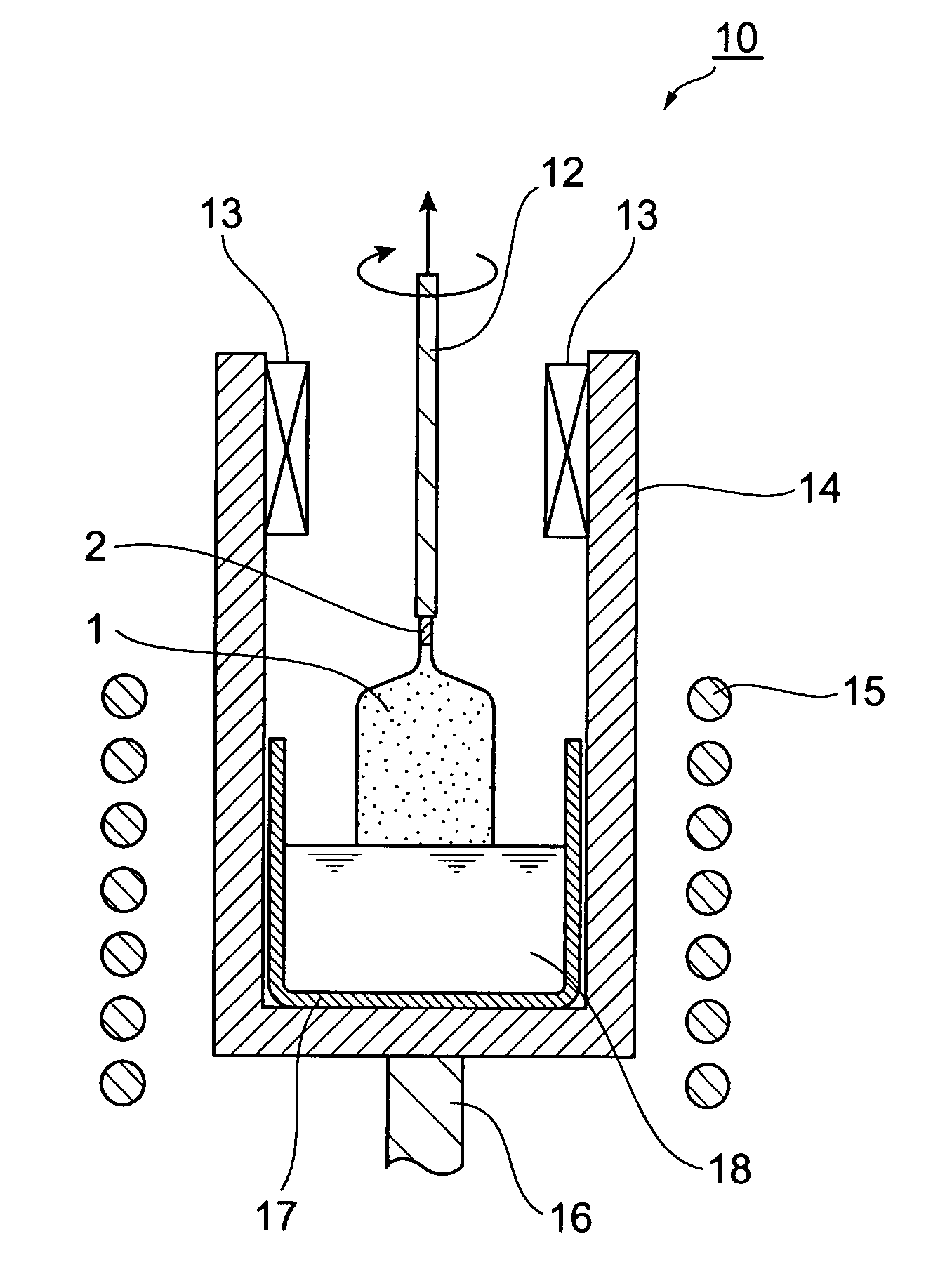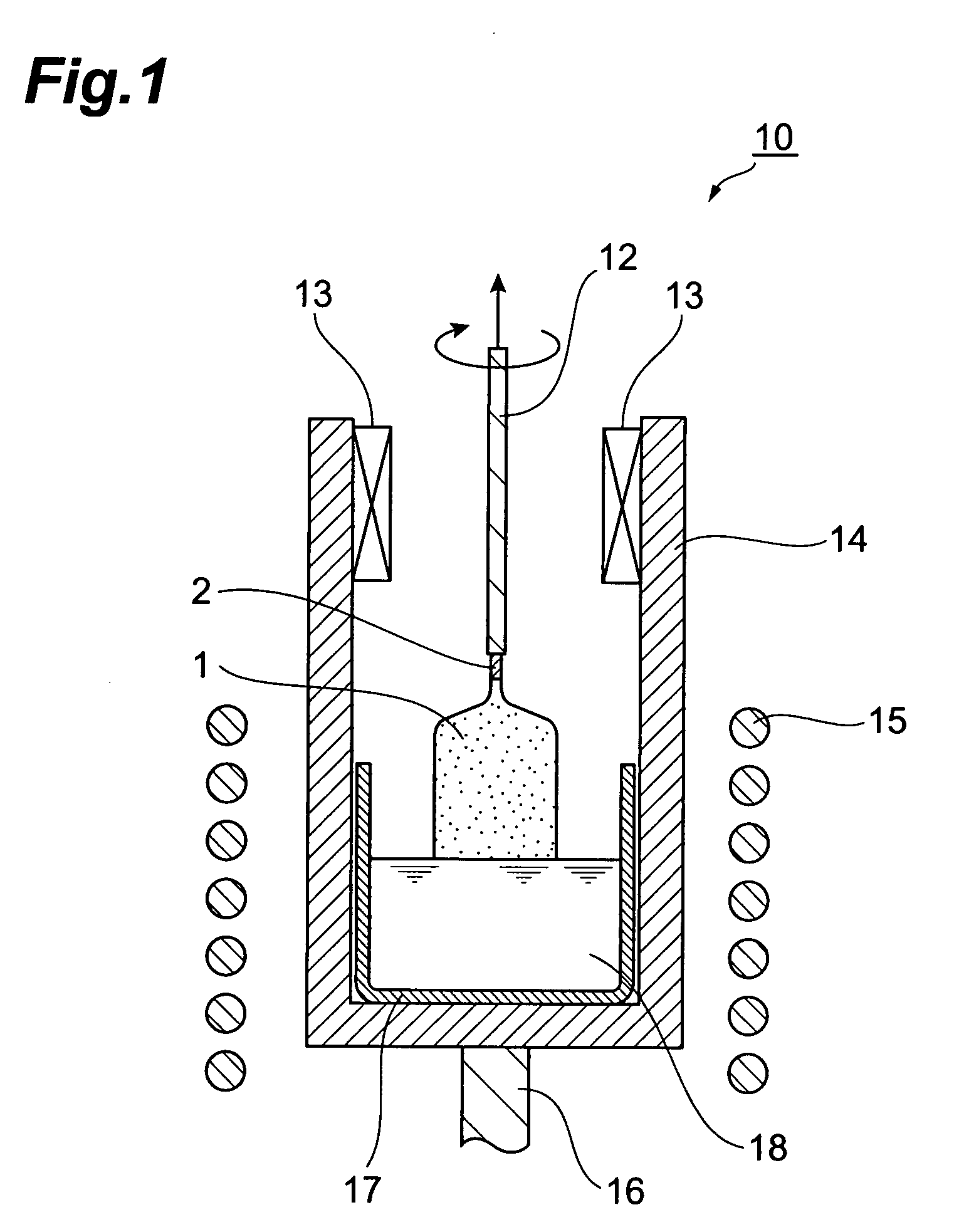Single crystal for scintillator and method for manufacturing same
a technology of single crystal and scintillator, which is applied in the direction of conversion screens, nuclear engineering, from gel state, etc., can solve the problem of difficult to obtain stable fluorescence output characteristics, and achieve the effect of reducing the background of fluorescence outpu
- Summary
- Abstract
- Description
- Claims
- Application Information
AI Technical Summary
Benefits of technology
Problems solved by technology
Method used
Image
Examples
example 1
[0073] A single crystal was produced based on the well-known Czochralski method. First, gadolinium oxide (Gd2O3, purity 99.99 wt. %), lutetium oxide (Lu2O3, purity 99.99 wt. %), silicon dioxide (SiO2, purity 99.9999 wt. %) and cerium oxide (CeO2, purity 99.99 wt. %) were mixed to obtain a predetermined stoichiometric composition, and a mixture, 500 g, was fed as a raw material for a single crystal Gd2−(r+s)LurCesSiO5 (r=1.8, s=0.003) together with 0.02244 g (equivalent to 0.0024 wt. % of Al) of aluminum oxide (Al2O3, purity 99.99 wt. %) into an Ir crucible with a diameter of 50 mm, a height of 50 mm, and a thickness of 2 mm. Molted liquid was obtained by heating the mixture to its melting point (approximately 2050° C.) in a high-frequency induction heating furnace. The melting point was measured with an electronic optical pyrometer (manufactured by Chino KK, Pyrostar MODEL UR-U, product name).
[0074] Seeding was then performed by inserting a distal end of a pulling rod having a seed...
example 2
[0078] This example was identical to Example 1, except that 0.0224 g of aluminum oxide (Al2O3, purity 99.99 wt. %) was changed to 0.0449 g (equivalent to 0.0048 wt. % as Al).
example 3
[0079] This example was identical to Example 1, except that 0.0224 g of aluminum oxide (Al2O3, purity 99.99 wt. %) was changed to 0.4488 g (equivalent to 0.048 wt. % as Al).
PUM
 Login to View More
Login to View More Abstract
Description
Claims
Application Information
 Login to View More
Login to View More - R&D
- Intellectual Property
- Life Sciences
- Materials
- Tech Scout
- Unparalleled Data Quality
- Higher Quality Content
- 60% Fewer Hallucinations
Browse by: Latest US Patents, China's latest patents, Technical Efficacy Thesaurus, Application Domain, Technology Topic, Popular Technical Reports.
© 2025 PatSnap. All rights reserved.Legal|Privacy policy|Modern Slavery Act Transparency Statement|Sitemap|About US| Contact US: help@patsnap.com


